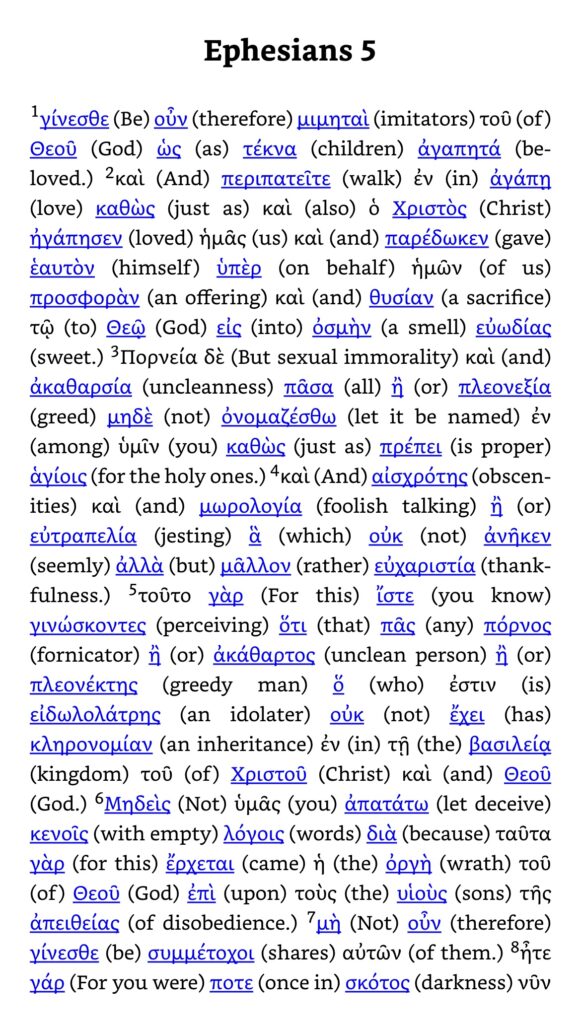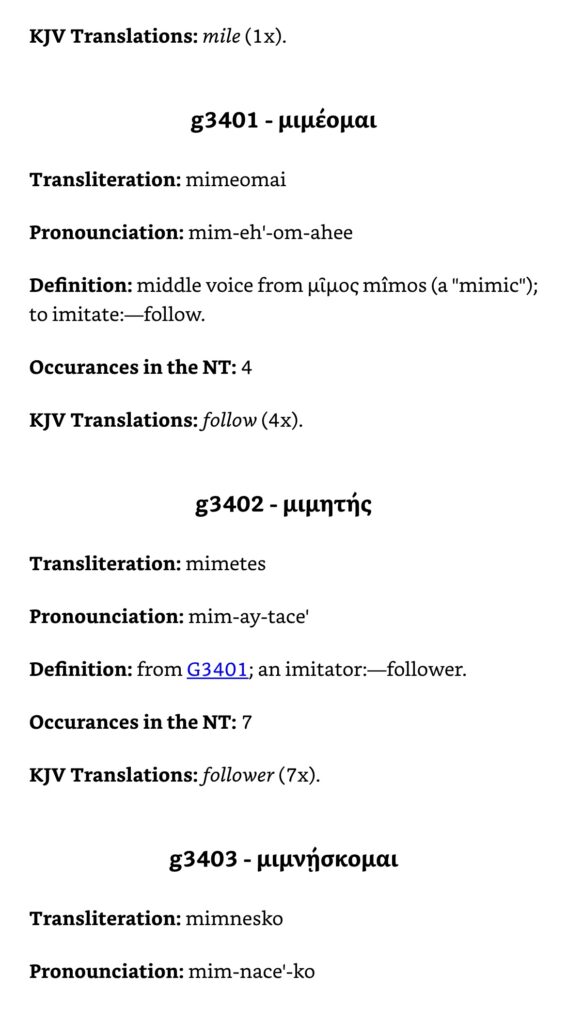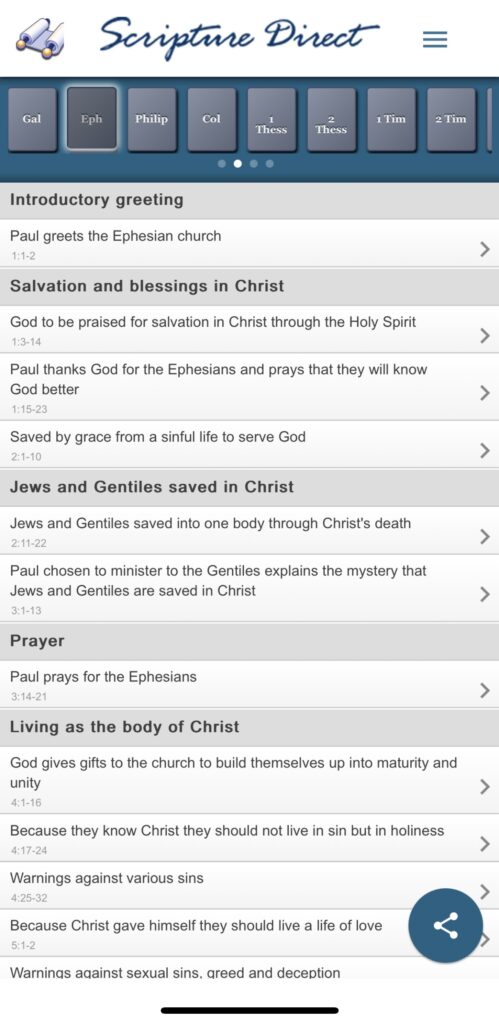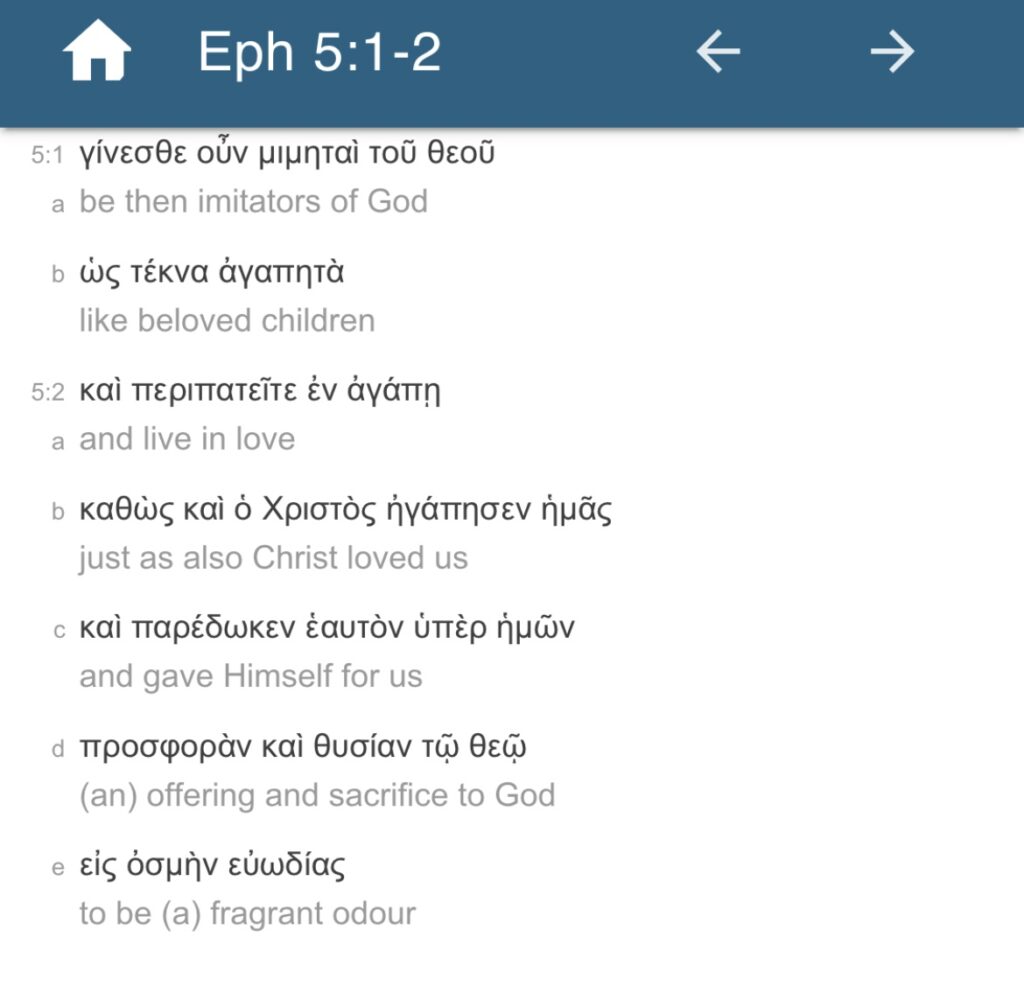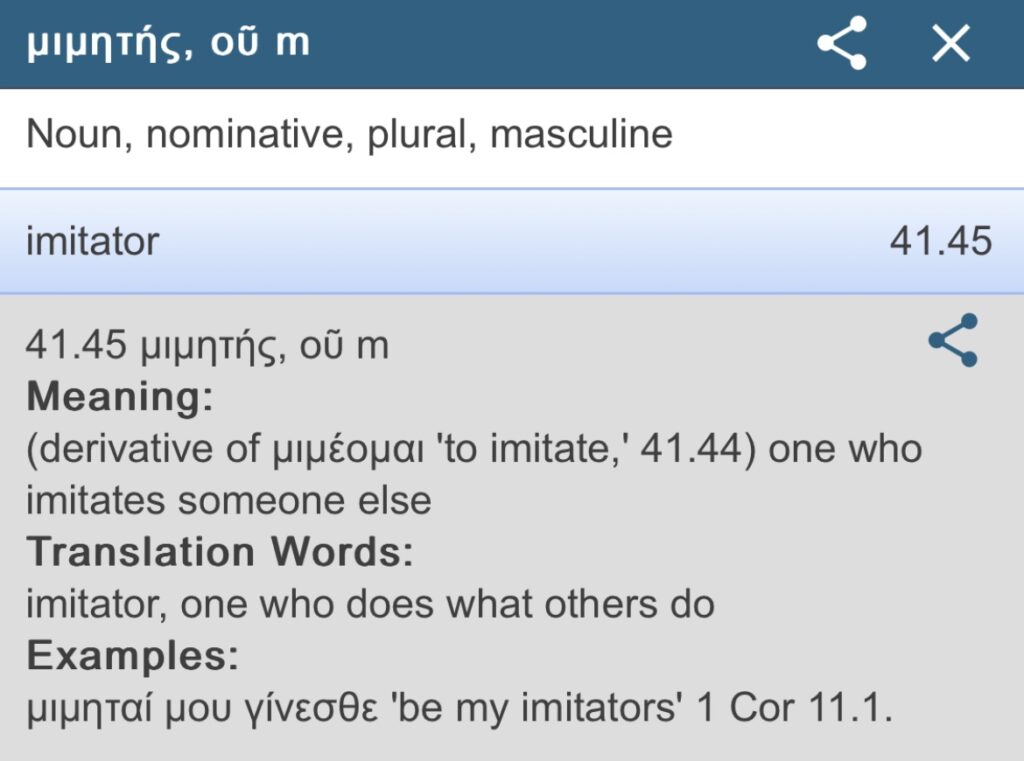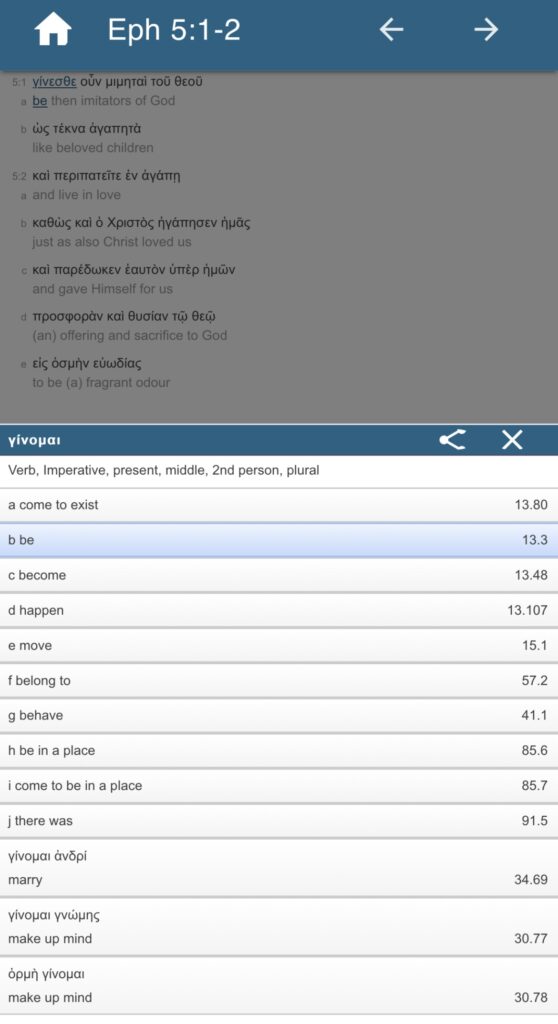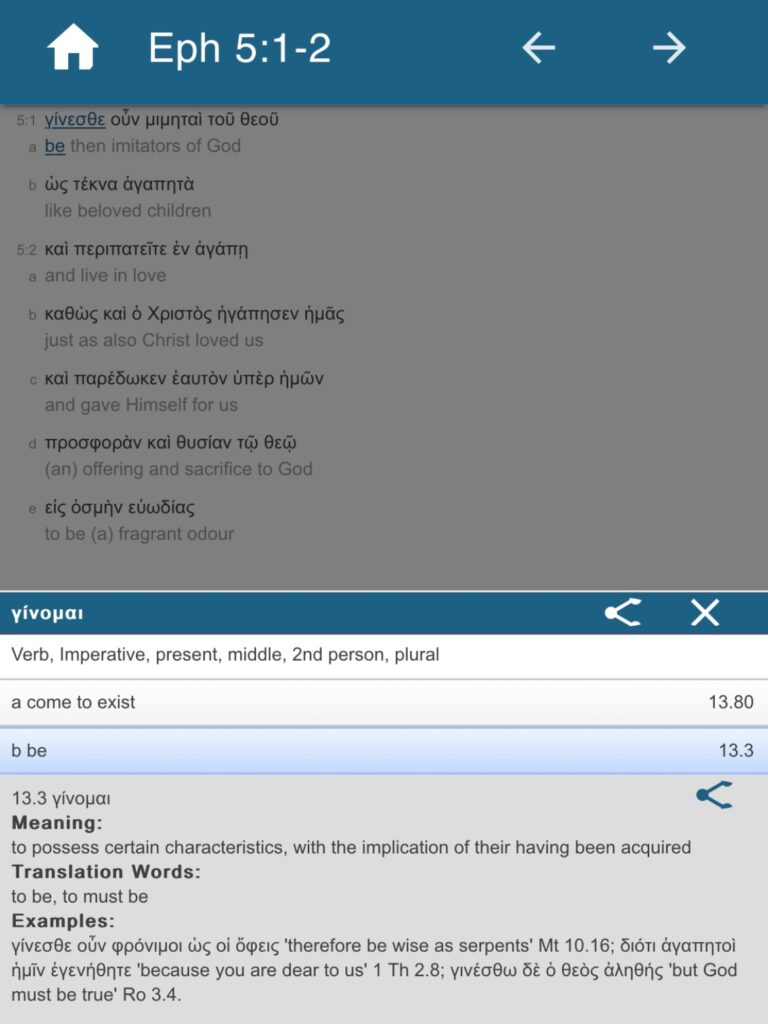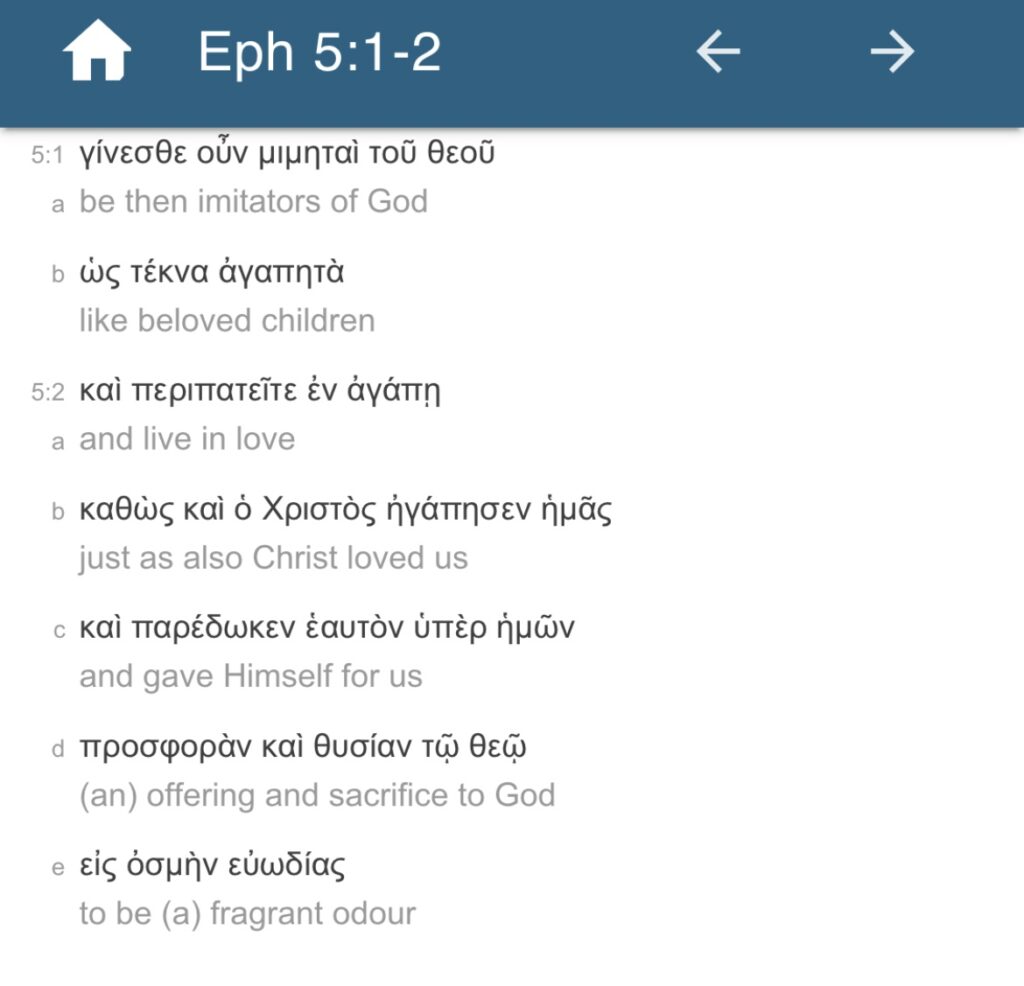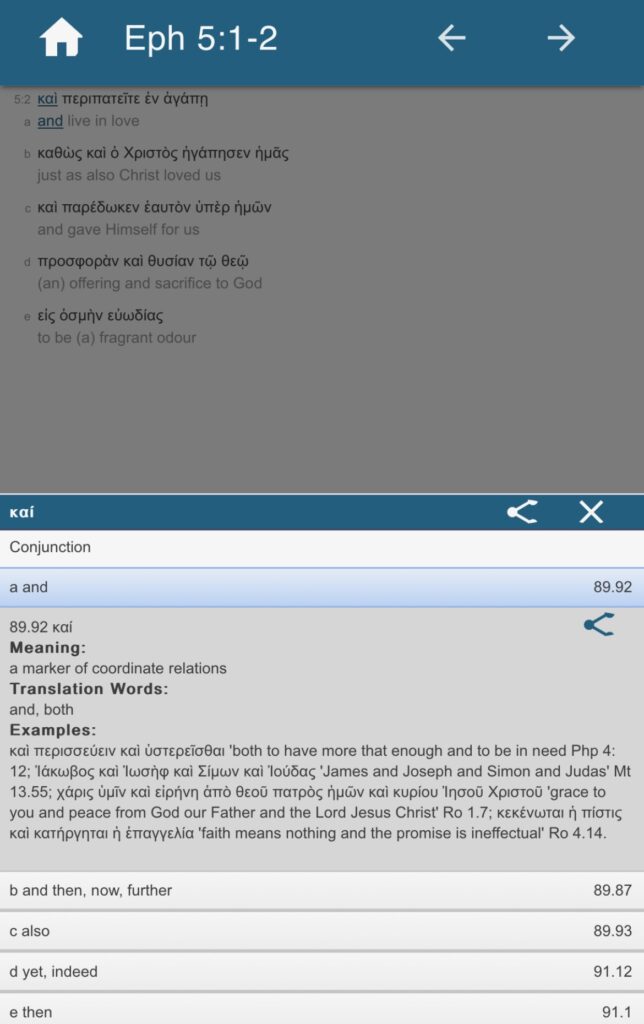This post is in a series of exemplar texts in which our Koine keyword “kai” plays a deeper role than is commonly grasped. Here we will consider a most-important verse (yes they’re all important, but some more so) that establishes the theme of the entire Epistle to the Romans and thereby of the central doctrines of the NT.
Our consideration here is Romans 1:7. As we will do throughout this website, our focus is on the specific KAIStudies point, such as here the use of Koine connective kai, and not a full exposition of the underlying texts. (And with Rom 1:7, entire books could be written without exhausting the depth and significance of the text).
Rom 1:7 Text
Below is the ESV translation of Rom 1:7
To all those in Rome who are loved by God and called to be saints: Grace to you and peace from God our Father and the Lord Jesus Christ.
Rom 1:7 (ESV)
There are three occurrence of “and” in the ESV: the first is addition by the translators without a mss source, the other two are default translations of kai. We can determine this connection, or mis-connection, between an English translation and the mss by use of the various KAI Tools discussed in various posts.
Here we will use Logos Software based on the ESV text for Rom 1:7, as given in the pdf directly below:
Rom-1-7-ESV-InterlinearThe base English text shown above is the ESV. The Koine underlying text is a reverse interlinear, meaning the Koine word order has been reassembled so that each Koine word is positioned, out of its original order, to match the corresponding English translation (ESV). This makes it simple to find the Koine word being translated but at the loss of the word order emphasis that is present in the mss. This particular reverse interlinear includes the mss word order numbering by the small number subscript to the first line below the English text.
Some Fixes / Clarifications to Rom 1:17
As shown above, I have crossed through four words in the ESV that do not appear in the mss: the first and, the phrase “to be,” and the definite article “the” before the closing words “Lord Jesus Christ.” The ESV is certainly not “wrong” to have it translated as it has. Its motivation is to provide a smooth reading English ‘voice’ to the Scriptures. But, our purpose here is not smoothness but exactitude as best as we are able to construct it.
We note that there are other English translations which more, or less, strive for greater, or even greatest, literality. Shown below are the NASB95, KJV, and the amazingly reliable Young’s Literal Translation (YLT).
to all who are beloved of God in Rome, called as saints: Grace to you and peace from God our Father and the Lord Jesus Christ. (NASB95)
Romans 1:17 in NASB95, KJV, and Young’s Literal Translation, Respectively
To all that be in Rome, beloved of God, called to be saints: Grace to you and peace from God our Father, and the Lord Jesus Christ. (KJV)
to all who are in Rome, beloved of God, called saints; Grace to you, and peace, from God our Father, and [from] the Lord Jesus Christ! (YLT)
All three translations did not insert the first “and” present in the ESV, and which I have struck out in the above pdf of Rom 1:17. The YLT does not use any part of “to be” or an equivalent exactly as the mss reads and as I have crossed out; the NASB95 uses “as” and the KJV “to be.” Again these additions are not wrong. However it is cleaner, and more direct, to reflect the translation exactly as the mss, namely: the Epistle is direct to those in Rome “called saints” (and of course, to us as well); the text is not (explicitly) saying we are called “as” saints–implying that we are called only because we possess the preexisting condition of “being” saints–nor is it suggesting a potentiality of future condition as the added phrase “to be” might convey.
One final ‘fix’ I made in Rom 1:17 was suggesting the word “of” as in “of God” instead of the ESV’s “by God.” This is a point Koine scholars would understand deeply because of the richness of the Koine genitive case (typically used of possession, but it’s a richer subject than we are addressing here). All three of the additional translations given just above translate the genitive case of “God” as shown–“of God”–as I have done in the pdf.
Our main point in this post is the Koine connective kai.
Is “And” the Best Translation for the First “kai” in Rom 1:7?
The first of two occurrences of “kai” connects “Grace to you” (the phrase used by John MacArthur’s ministry) with “peace from God.” All four of the above translations uses the simple translation “and.” As discussed elsewhere, such is the default translation employed many thousands of times in the NT for kai, so it is not wrong.
But could kai be conveying something more?
kai as ‘Plus’
As discussed, the word “and” can be used in multiple ways. The default idea of “and” is “plus:” one “and” two is three. No one would wonder does such phrase–one and two is three–also mean that “two and one is three.” One of the earliest math principles learned in the earliest grades of elementary school is that addition is commutative, meaning: the order in which addition is expressed does not affect the calculation. And, so, “and” as used to express such addition has no significance as to order, priority, or meaning. There are many such language examples: ham and eggs, cream and sugar, peanut butter and jelly, salt and pepper. No coffee barista would ask a customer: do you want the cream added after the sugar, or the sugar after the cream? (One could do an experiment on this by ordering the coffee in insistence on sequence, say sugar first, then cream, and see what happens).
Further, in every day oral discourse, speakers (especially excited ones who do not want to lose the ‘floor’) will interject “and” at every phrase as a signal that they are not done speaking, or as a peacekeeper as they are thinking of what next they want to say. When public speakers do this, it is most annoying because are logically thinking there is a connection that is being made when there is none. In writing such use is a classic illustration of the dreaded run-on sentence.
Is the Apostle Telling the Loved by God that We Get Two Things: Grace “and” Peace?
The Epistle begins with identifying our condition, “loved by God called saints.” Because there is no connecting word in the mss, it is reasonable to conclude that the full impact of the phrase is that it is highlight a single unity of our being. This is a very powerful idea, that is stripped away by the ESV’s insertion of “and” where there is no kai in the mss (something both the KJV and NASB95 have done, but not the YLT).
Now, if we have the coherent unit of being as the antecedent phrase of “grace to you and peace” are we being told that the result is two things, say in the one hand there’s a ‘thing’ called “grace” and in the other hand a ‘thing’ called “peace,” each something like separate stickers that are affixed to us, something like a tattoo on one forehand and the other? If “kai” is “and” and only in the “plus” (additive) sense, then that is the best reading of the underlying meaning: we’re each receiving two separate gifts from God.
And, of course, as the Roman Epistle, and the entire NT tells us, that we indeed do possess distinguishable gifts of grace and peace, each word laden with deep, rich meaning. The issue here, however, in Rom 1:7, is the text conveying something more than two things by the use of kai?
Can kai Convey the Idea that Grace Yields, Leads to, Peace?
As discussed elsewhere, “and” can be freighted with a deeper meaning than commutative plus. It can be “next” as a sequence in space or time. It can mean next in the sense of result: John ran and tripped and broke his arm; such use of “and” is more than “plus,” and even more than “next” in a sequence.
In similar fashion, or even more so, kai in Koine can and does convey deeper connections than a mere plus. Again as discussed elsewhere, kai generally does not carry the more rigid concept of cause and effect; there are other Koine constructions that do that explicitly. Rather it can express, as I believe it does here in Rom 1:7, that the one, the antecedent “grace,” directs us to recognizing the subsequent “peace” derives from it.
In this way we would understand that “peace” is not delivered out of nowhere as its own ‘thing,’ but, rather, flows from a bigger, coherent whole ‘thing,’ namely “Grace.” This is supported by the coherent unity of the antecedent phrase “loved of God called saints” and the central theme of the Epistle, establishing the Grace Principle and contrasting it in myriad ways to “Law” and “Works.”
So, how would we then better translate such “kai,” presumptively claim such insight? Again as discussed elsewhere, the English word “unto” often ‘works’ though it is archaic in our day. But consider this: “…loved of God called Saints: Grace to you unto peace from God…” Such form lays the foundation of what is a central point of the NT, namely: that God’s gift of unmerited Grace has as its consequence something the OT Law never could provide a always-condition of peace with God, the essence of the one sacrifice (Heb 10:4) for all time providing the Atonement moving us from guilt to not-guilt to propitiation (active permanent righteousness in God’s sight, because of our “being” “in Christ”).
I would favor as an even better translation than “unto” by the use of a rightward facing arrow, as: “…love of God called Saints: Grace to you → peace from God…” I find such form persuasive as kai commonly functions as a form of punctuation (there is no actual function in the Koine as we have in English) and , sometimes, as a scene break establishing a kind of short pause.
Is “and” the Best Translation for the Second kai in Rom 1:7?
Returning to the pdf that began this post, let us now consider the other occurrence of kai in Rom 1:7: ” …God our Father and the Lord Jesus Christ” as the ESV and other translations express “and: for “kai.” (Note: there is no definite article “the” preceding “Lord Jesus Christ” in the mss, exactly as there is none preceding “God,’ thus establishing a clearer parallel of “Being,’ consistent with the Doctrine of the Trinity).
Again let us ask the same question. Is this text telling us that there are two distinguishable Persons who are the Givers of Grace and Peace? The use of “and” with the default sense of “plus” suggests exactly this situation. And, because the NT develops the full exposition of the Trinity, that there is One God, and yet there is in some humanly incomprehensible way the Being of Three Persons–as we know Father, Son, and Holy Spirit. This is foundational to Christianity, and any proper understanding of the NT. Heresies began early in church history, and continue to this day, denying such Trinity of Being in One God. So, it would not be ‘wrong’ to understand that through the Person of God the Father and (plus) the Person of Jesus Christ we have received “Grace → Peace.”
However, as we will see in numerous subsequent examples in later posts, the Koine mss uses kai to connect closely joined words, such as “God kai Father” wherein the better understanding is that God is unto Father, as His intrinsic Being and Relation to us, not as two separate ‘hats’ he wears such a some man named “Fred” who is a “manager” and (plus) a “father.”
So, I argue in the same way that a deeper understanding is available to us if we grasp that all the blessing of Grace unto Peace, the Atonement, Everlasting Life–the big subjects of the Epistle to the Romans, and us–derive from God the Father having sent His Son who Was/Is/Ever Will Be “Lord” (King) “Jesus” (his fully human Being, which name comes from the Hebrew “Joshua” meaning God with us) “Christ” (the Koine translation of the Hebrew word deriving from “Messiah,” Anointed Deliverer from God). Thus in the seventh verse of the first chapter of the Epistle we have this overwhelmingly important foundation, that all the great truths to be expanded derive from the One God acting in and upon His Creation on behalf of His Elect in a way humanly incomprehensible, namely entering His Creation to save the lost.
